— Published on 17 Jun 2024

The latest standard, TIA-568.2-D, defines balanced twisted-pair cabling (commonly known as Ethernet cabling) and its components. There are three standard types of Ethernet cabling deployments:
The purpose of an Ethernet link is to establish a physical connection between server room equipment and end devices, ensuring reliable data transmission within a local area network (LAN), as illustrated in the diagram below:
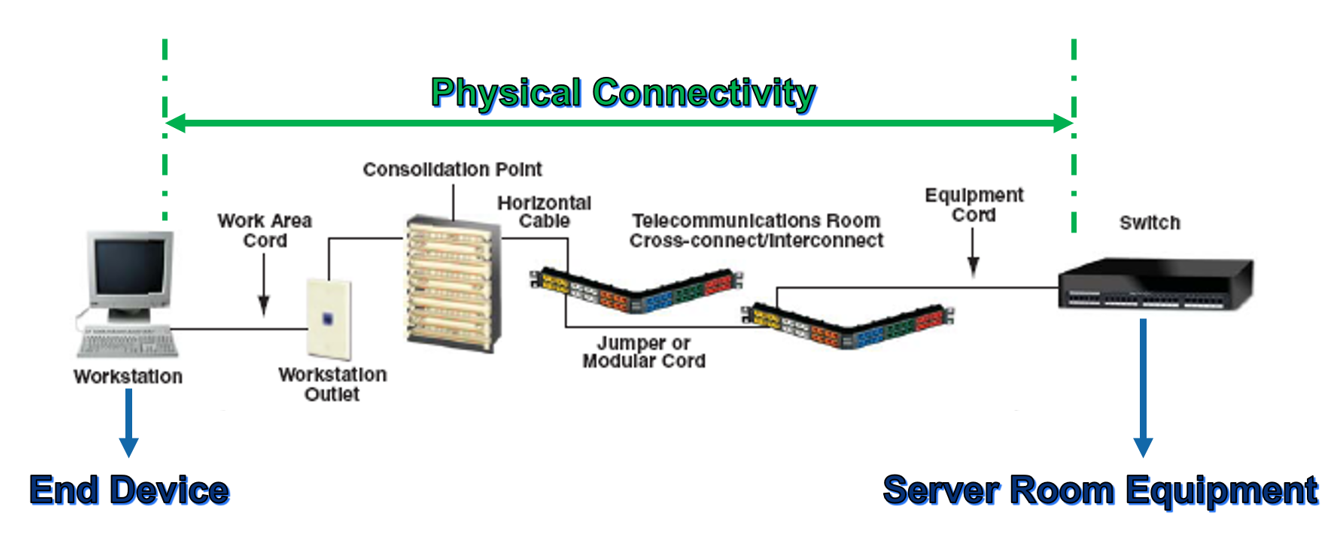
The latest standard, TIA-568.2-D, defines balanced twisted-pair cabling (commonly known as Ethernet cabling) and its components. There are three standard types of Ethernet cabling deployments:
The permanent link, often referred to as horizontal cable, is a structured cabling system that forms the fixed infrastructure within a building. It connects the patch panel network ports in the telecommunications room to the network outlets at the work areas, providing a standardized, structured, and organized framework for efficient and scalable network connectivity.
Once deployed, a permanent link typically does not require moves, adds, or changes over time, hence the term "permanent." To qualify as a permanent link, the length must not exceed 90 meters, and the number of connectors (also known as jack modules) must be within four units. Below are a few examples of permanent link deployments:

Solution 1: Panel to Panel connection with 2 connectors
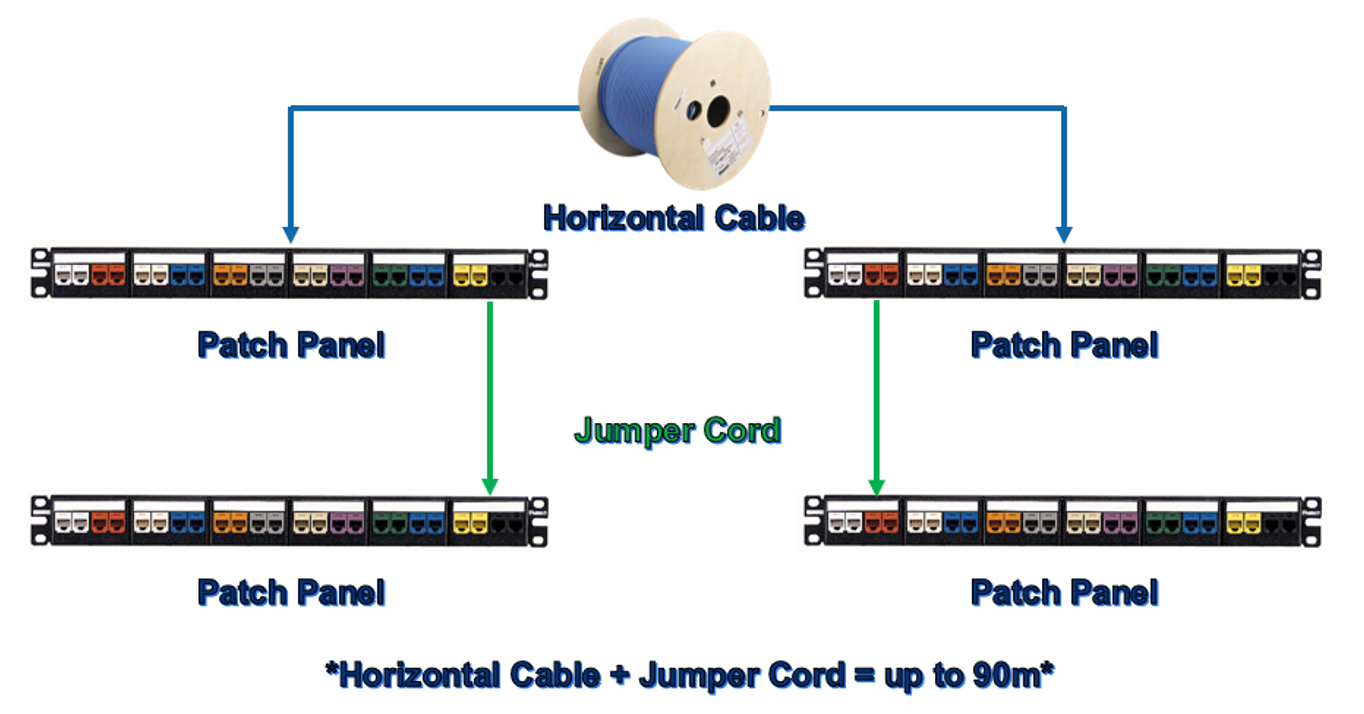
Solution 2: Panel to Panel connection with 4 connectors
Note: TIA standard supports up to 4 connectors. Panduit can support up to 6 connectors.
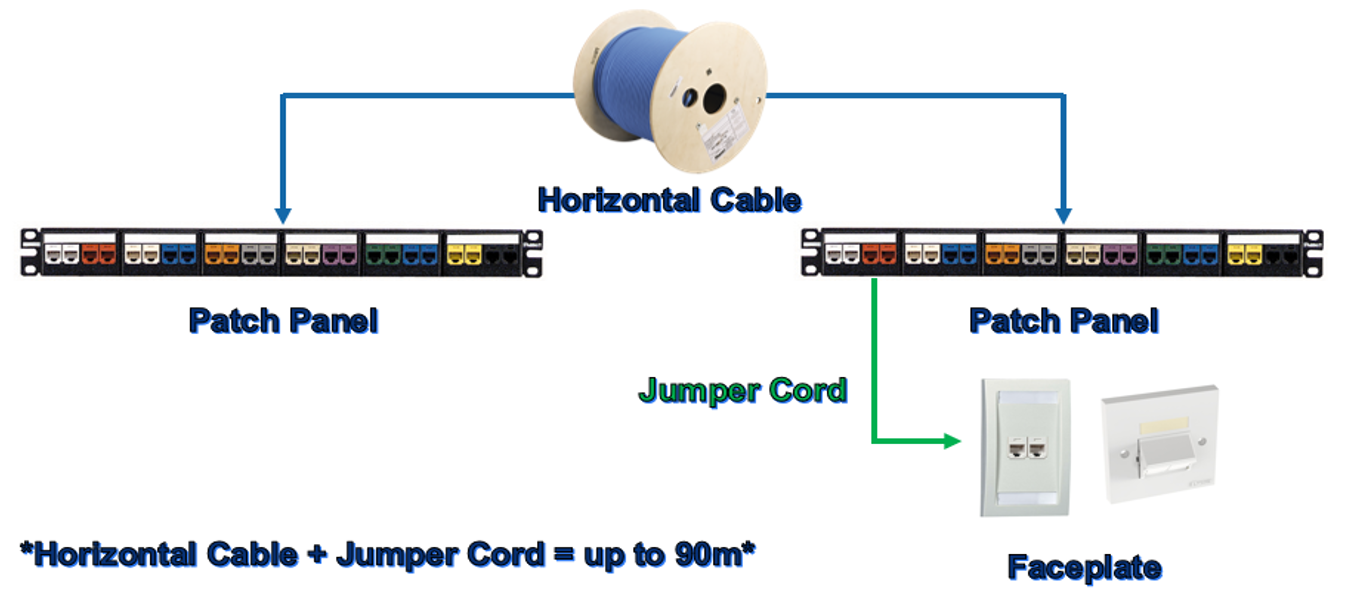
Solution 3: Panel to Faceplate Outlet connection with 3 connectors
A channel link in networking establishes a standardized and reliable communication pathway between network devices. It encompasses both the permanent link and additional components, such as equipment cords or patch cords, to ensure consistent and high-quality data transmission within a local area network (LAN).
The supported length for a channel link is up to 100 meters, including up to 5 meters of patch cord cable connection at each end of the permanent link. The diagram below demonstrates the standard channel link deployment:
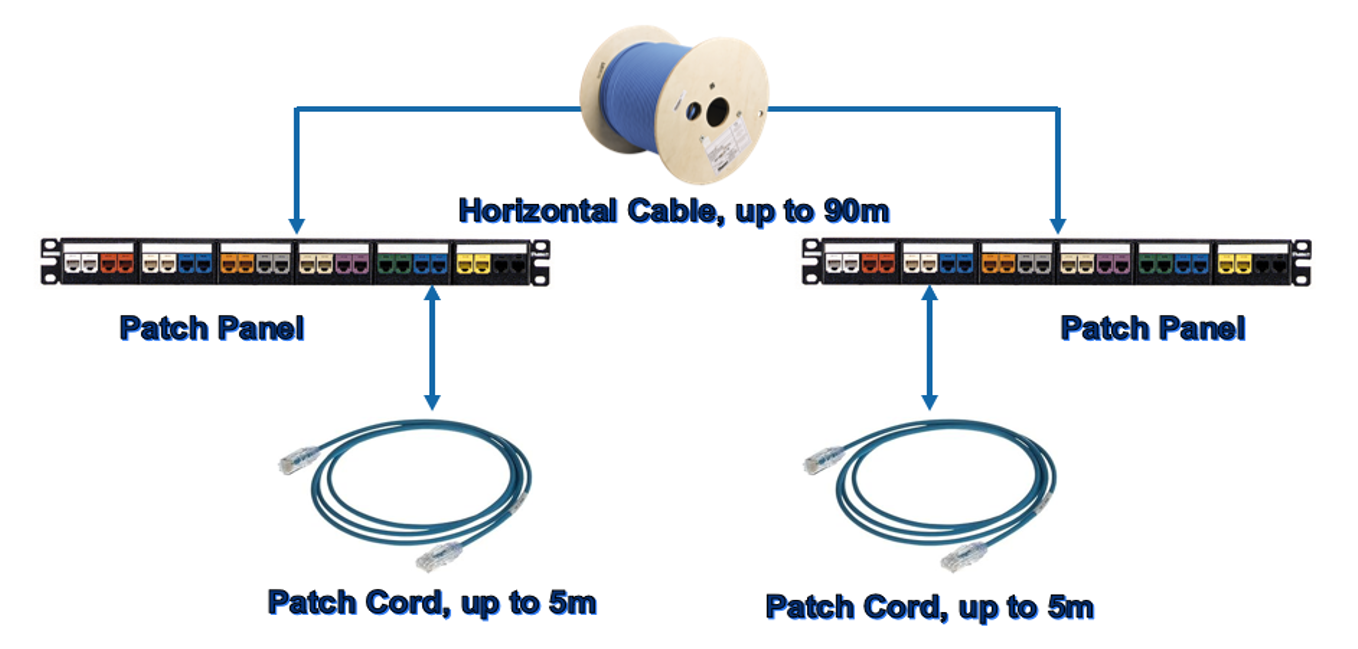
Channel Link Deployment: Permanent link and patch cord connection, up to 100m
The MPTL (Modular Plug Termination Link) is a new addition to the TIA-568.3-D standard. Unlike traditional permanent links that terminate in a patch panel, an MPTL link terminates directly with modular plugs, making it suitable for applications like equipment-to-outlet connections such as Wireless Access Points (Wi-Fi) and Closed-Circuit Television (CCTV).
Similar to permanent links, MPTL links typically do not require moves, additions, or changes over time. To qualify as an MPTL link, the length must not exceed 90 meters, with an option for one consolidation point. The diagram below illustrates an MPTL link deployment:
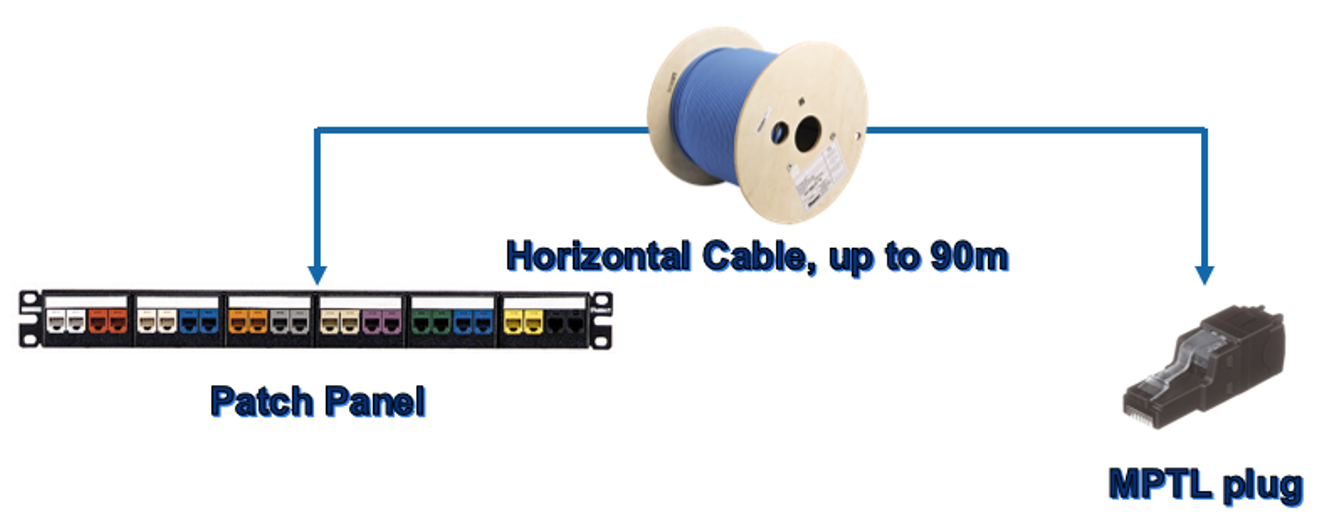
MPTL Link Deployment: Permanent link with jack module and MPTL plug, up to 90m
Deploying Ethernet links according to industry standards serves several crucial purposes, ensuring reliable and standardized network connectivity. The key purposes of adhering to these standards include the following:
Ensuring standardized, reliable, and scalable network connectivity is crucial, and deploying Ethernet links based on TIA standards achieves this goal. It supports interoperability, facilitates integration with future technologies, and ensures compliance with industry benchmarks.
#Cat6A #Cat6 #RJ45 #EthernetCable #Wi-Ficabling #CCTVcabling #CopperCable #CopperCabling #10GBASE-T #FutureProofNetworkCabling #GREENdeployment #SustainableNetworkSolution #IoTCablingSolution #POE #SmallDiameterCable #BackwardCompatibleCabling #1000BASE-T
Large Paragraph Text Used As A Subheading
Pellentesque non magna eget ex lobortis finibus. Lorem ipsum dolor sit amet, consectetur adipiscing elit. Etiam nec arcu non eros hendrerit viverra a vitae libero. Etiam et ultricies nulla. Donec euismod lectus magna, eu dignissim mauris hendrerit vulputate.
| Time | Place | Details |
|---|---|---|
| 10:00 am - 10:55 am | Expo Hall | Meet and greet in the lobby outside the Expo Hall before the General Assembly. |
| 11:00 am - 11:55 am | Rm 314 | Expert Track: TOP 10 WAYS TO MAKE A DIFFERENCE IN THE INDUSTRY | John Dough, CFO Marketizingly |
| 11:00 am - 11:55 am | Rm 159 | Social Track: MODERN NETWORKING | Hosted by: SponsorName |
Pellentesque non magna eget ex lobortis finibus. Lorem ipsum dolor sit amet, consectetur adipiscing elit. Etiam nec arcu non eros hendrerit viverra a vitae libero. Etiam et ultricies nulla. Donec euismod lectus magna, eu dignissim mauris hendrerit vulputate.